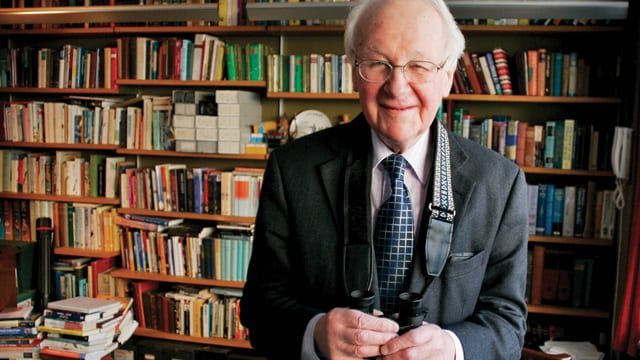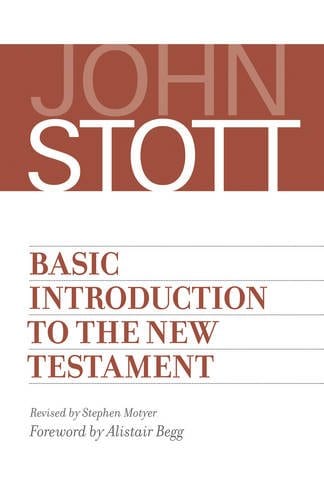
A handful of years ago a blustery (American) megachurch pastor commented that England has failed to produce a decent preacher/teacher in our time. Obviously this was a ridiculous comment. There are many outstanding Christian leaders in the UK; one such was John Stott (who passed away in 2011). Stott exhibited that kind of quiet strength that drew many to him. He was also a gifted and winsome writer. I read his The Cross of Christ in college, and I enjoyed his The Radical Disciple and his writings on the Sermon on the Mount in more recent years.
 Recently Eerdmans has republished his Basic Introduction to the New Testament, which has its originals as far back as 1954 (under the title Men with a Message; Stephen Motyer has added chapters on Matthew and Mark to fill out the book). Reading the Basic Introduction now, it is obviously not fully up-to-date on biblical scholarship and popular trends and questions for everyday believers; still, I am so impressed with Stott’s mastery of the scholarship of his time and his desire – for the sake of the church – to educate believers for the study of Scripture.
Recently Eerdmans has republished his Basic Introduction to the New Testament, which has its originals as far back as 1954 (under the title Men with a Message; Stephen Motyer has added chapters on Matthew and Mark to fill out the book). Reading the Basic Introduction now, it is obviously not fully up-to-date on biblical scholarship and popular trends and questions for everyday believers; still, I am so impressed with Stott’s mastery of the scholarship of his time and his desire – for the sake of the church – to educate believers for the study of Scripture.
Two things struck me about the Basic Introduction. First of all, in the chapter on Luke, Stott picked up on all the crucial themes that relate to this gospel; for a book from 1954, I was pleased with Stott’s emphasis on how Luke gives special attention to women (Stott calls Luke the “gospel of women”). He notes that Luke most clearly portrays the “welcoming attitude of Jesus towards women, and the place he allowed them to occupy in his ministry” (58). Stott also recognized how Luke underscored the gospel’s care for the marginalized and lowly – a timeless message, with obvious relevance for us now.
Also, for the book of Revelation, Stott had a very good grasp on the different ways that scholars approach the text – preterist, historicist, futurist, and time-less symbol. In his usual diplomatic style, Stott argues that there is something right about each one, but argues strongly against the “historicist” approach in general. He seems most attracted to the benefit of the time-symbolic approach. Here is his brief summary on Revelation:
[The message of Revelation] centers on the vision of the Christ who shares his people’s suffering and death and then shares the throne of God. It points us beyond the chaos and trauma of world history, and of our own lives, to our security in God’s plan both for us and for the world. It takes evil seriously, but God even more so. It horrifies us with its stark portrayal of death and evil, then raises our spirits to heaven by putting on our lips words of the most wonderful praise. As we sing with the heavenly hosts, we know that the powers of evil have been defeated, and we are redeemed: ‘Salvation belongs to our God, who sits on the throne, and to the Lamb!’ (7:10) [pg. 192]
I am hopeful that Stott will inspire other Christian leaders today to invest more in teaching Scripture to the people of God.











